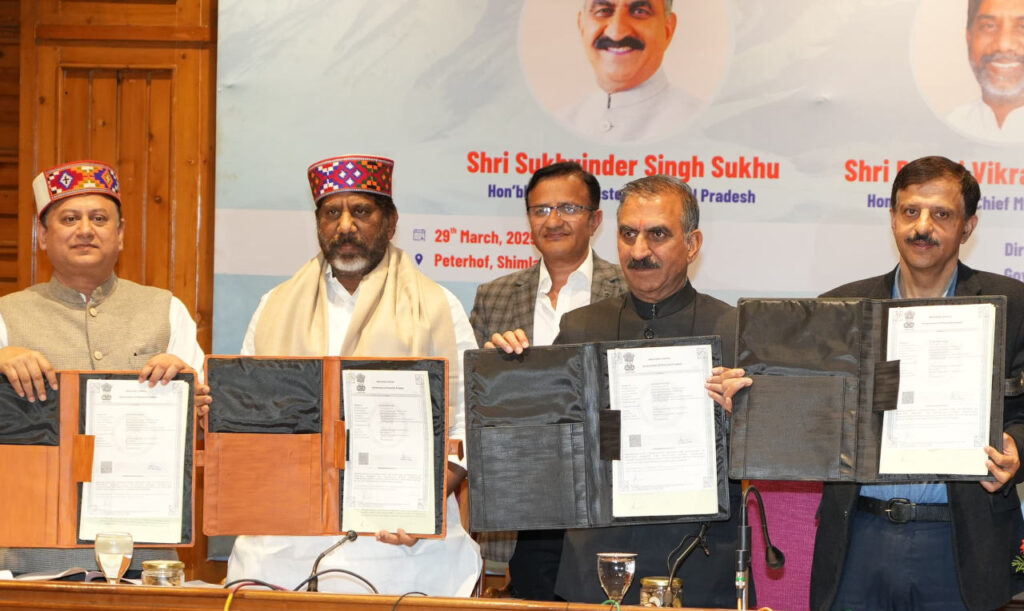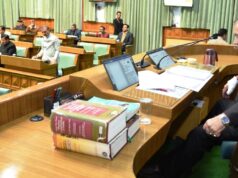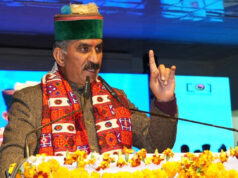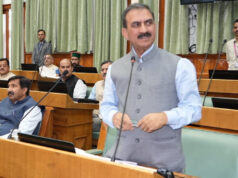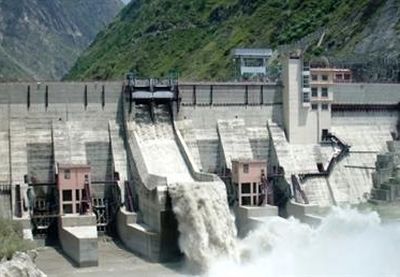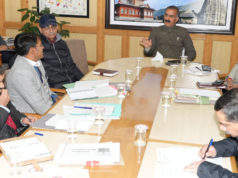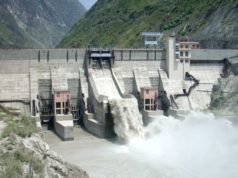Shimla – In a landmark agreement, the Government of Himachal Pradesh has signed a Memorandum of Understanding (MoU) with the Government of Telangana to develop the 400 MW Seli and 120 MW Miyar Hydro Electric Power Projects in the Lahaul-Spiti district. This marks the first-ever collaboration of its kind in the state’s history, signifying a major milestone in Himachal Pradesh’s efforts to harness its vast hydropower potential, estimated at 27,436 MW. The agreement was formalized today in Shimla by Secretary Power Rakesh Kanwar on behalf of Himachal Pradesh and Principal Secretary of Power Sandeep Kumar Sultania representing Telangana, in the presence of Chief Minister Sukhvinder Singh Sukhu and Telangana Deputy Chief Minister Bhatti Vikramarka Mallu.
The two projects, to be established along the banks of the Chenab River, come with an estimated cost of Rs. 6,200 crore and are expected to generate approximately 5,000 direct and indirect jobs for the youth of Himachal Pradesh. Under the terms of the MoU, Telangana has paid an upfront premium of Rs. 26 crore. Post-commissioning, Himachal Pradesh will receive free power under a tiered structure outlined in the state’s new Energy Policy: 12% for the first 12 years, 18% for the next 18 years, and 30% for the remaining 10 years. After 40 years, ownership of both projects will revert to Himachal Pradesh. Additionally, Telangana will contribute 1.5% of the project cost to the Local Area Development Fund (LADF) and provide an extra 1% free power for LADF post-commissioning. Affected families will also receive monetary benefits equivalent to 100 units of electricity per month for 10 years.
The Seli Hydro Electric Project (400 MW) involves an 80-meter-high concrete gravity dam and extensive tunneling, while the Miyar Hydro Electric Project (120 MW), located on a Chenab tributary, is a smaller run-of-the-river scheme without pondage. Together, they promise to bolster Himachal Pradesh’s renewable energy capacity, of which 10,519 MW has been harnessed to date. The Rs. 6,200 crore investment is poised to stimulate the local economy, with the creation of 5,000 jobs and contributions to the LADF ensuring tangible benefits for the region.
A New Era of Inter-State Cooperation
Chief Minister Sukhvinder Singh Sukhu hailed the collaboration as a “new era of inter-state cooperation in the renewable energy sector,” emphasizing its potential as a win-win for both states. Welcoming Deputy Chief Minister Mallu, he invited Telangana to explore further partnerships in power banking or trading. “Our government is committed to protecting the state’s resources while ensuring that hydropower projects benefit our people. We will extend full cooperation to Telangana to establish both projects and look forward to the earliest commencement of construction,” he said.
Telangana Deputy Chief Minister Bhatti Vikramarka Mallu echoed this sentiment, stating, “This MoU reflects our commitment to diversifying our energy portfolio while ensuring environmental sustainability, in line with Telangana’s Clean and Green Energy Policy, 2025. By partnering with Himachal Pradesh, we are taking a significant step towards securing cleaner, greener, and more reliable power for our future.” He highlighted Telangana’s growing energy demand and the need for energy security, positioning this collaboration as a strategic move for both states.
Controversies and Challenges: Balancing Development and Sustainability
However, the projects are not without controversy. Environmentalists and local communities have raised concerns about their ecological and social impacts in the fragile Himalayan region. The Chenab basin, seismically active and prone to landslides and avalanches, poses significant geological risks, with critics labeling the Seli project’s high-altitude location a potential “recipe for disaster.” The cumulative environmental toll of multiple hydropower projects in Lahaul-Spiti, including deforestation, altered river flows, and threats to biodiversity, remains a point of contention. Additionally, the displacement of approximately 93 families for the Seli project has sparked debates about adequate compensation and loss of livelihoods, despite proposed mitigation measures like monetary benefits and community development initiatives.
The projects’ history also reflects logistical challenges. Initially awarded to private entities like Moser Baer and Hindustan Powerprojects, they later transitioned to NTPC before this latest MoU with Telangana. These shifts have fueled discussions about transparency and execution delays, though the current agreement signals renewed momentum.
The Seli and Miyar projects encapsulate the broader debate over hydropower in Himachal Pradesh—a state rich in water resources yet grappling with the trade-offs of development. While proponents celebrate the clean energy potential and economic upliftment, critics urge caution, pointing to the region’s ecological fragility and the need for robust safeguards. As construction looms on the horizon, the collaboration between Himachal Pradesh and Telangana will be closely watched as a test case for sustainable inter-state energy partnerships in India’s renewable energy landscape.


